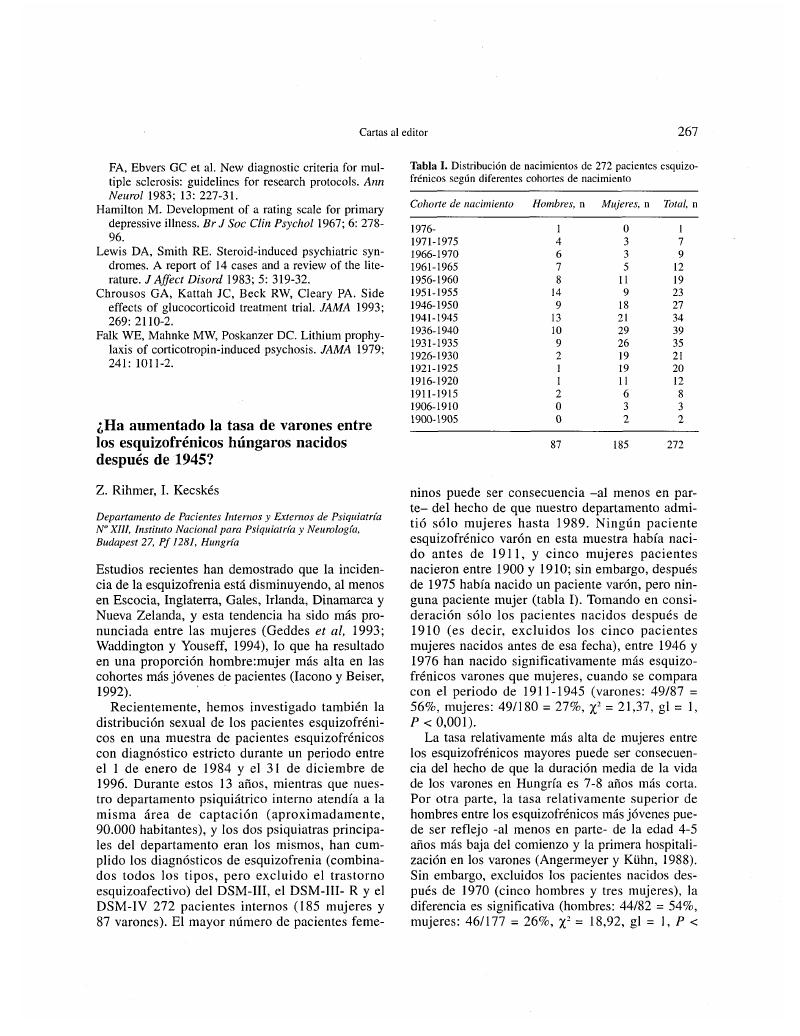No CrossRef data available.
Article contents
¿Ha aumentado la tasa de varones entre los esquizofrénicos húngaros nacidos después de 1945?
Published online by Cambridge University Press: 12 May 2020
Abstract
An abstract is not available for this content so a preview has been provided. As you have access to this content, a full PDF is available via the ‘Save PDF’ action button.

- Type
- Letter
- Information
- Copyright
- Copyright © European Psychiatric Association 1998
References
BibliografÍA
Angermeyer, MCKuhn, LGender differences in age at onset of schizophrenia. Eur Archives of Psychiatry and Neurological Sciences 1988; 237: 351-64.Google ScholarPubMed
Geddes, JRBlack, RJWhalley, LJEagles, JMPersistence of the decline in the diagnosis of schizophrenia among first admissions to Scottish hospitals from 1969 to 1988. Br J Psychiatry 1993; 163: 620-6.CrossRefGoogle Scholar
Iacono, GWBeiser, M.Are males more likely than females to develop schizophrenia? Am J Psychiatry 1992; 149: 1070-4.Google ScholarPubMed
Waddington, JLYouseff, HAEvidence for a gender specific decline in the rate of schizophrenia in rural Ireland over a 50-year period. Br J Psychiatry 1994; 164: 171-6.CrossRefGoogle Scholar




